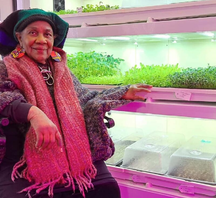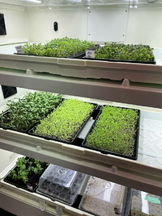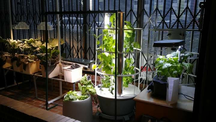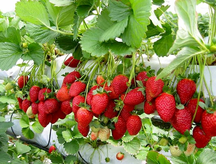Here is some ways that microgreens can be more nutritious than their mature counterparts. We've digested these from a review of current literature. They were delicious (sorry
1. Higher Nutrient Concentrations: Studies have shown that microgreens can contain higher concentrations of certain vitamins, minerals, and phytonutrients compared to their mature counterparts. For instance, research has found that microgreens can have significantly higher levels of nutrients like vitamin C, vitamin E, and beta-carotene.
2. Rich in Antioxidants: Microgreens are often packed with antioxidants, which help protect cells from damage caused by free radicals. Antioxidants like vitamin C, vitamin E, and various carotenoids are found in high amounts in many types of microgreens.
3. Increased Nutrient Absorption: Because microgreens are harvested at such an early stage, the nutrients they contain are often more bioavailable (meaning they are easier for the body to absorb and utilize) than in mature plants.
4. Dense in Essential Nutrients: Microgreens are known to be particularly rich sources of essential nutrients like vitamins (such as A, C, E, and K) and minerals (such as calcium, magnesium, and iron).
5. Polyphenol Content: Some microgreens, like red cabbage and cilantro, are rich in polyphenols, which are bioactive compounds known for their potential health benefits, including anti-inflammatory and antioxidant properties.
6. Fiber Content: While microgreens are not typically a significant source of dietary fiber, they can still contribute to overall fiber intake, which is important for digestive health.
7. Low in Calories: Microgreens are generally low in calories, making them a nutrient-dense option for those looking to maintain a balanced diet with lower calorie intake.
It's worth noting that the nutrient content of microgreens can vary depending on the specific type of plant. Different plants have different nutrient profiles, so the benefits of microgreens can vary accordingly.
While microgreens can be a nutritious addition to a diet, they should not be relied upon as the sole source of nutrients. A balanced diet that includes a variety of fruits, vegetables, whole grains, and lean proteins is essential for overall health and well-being.








